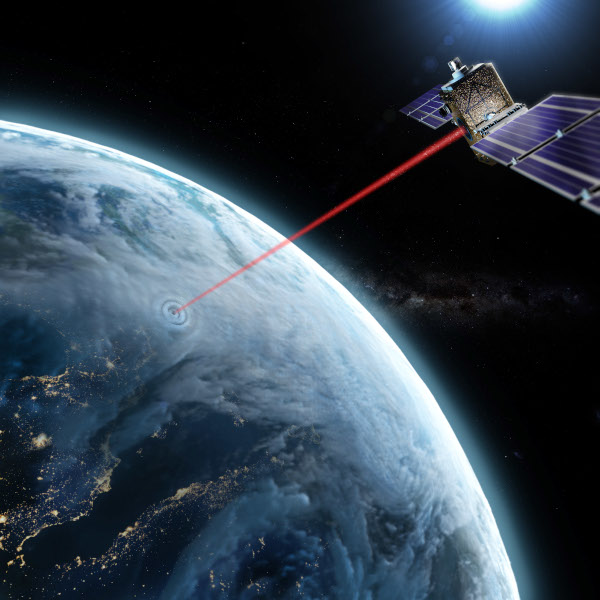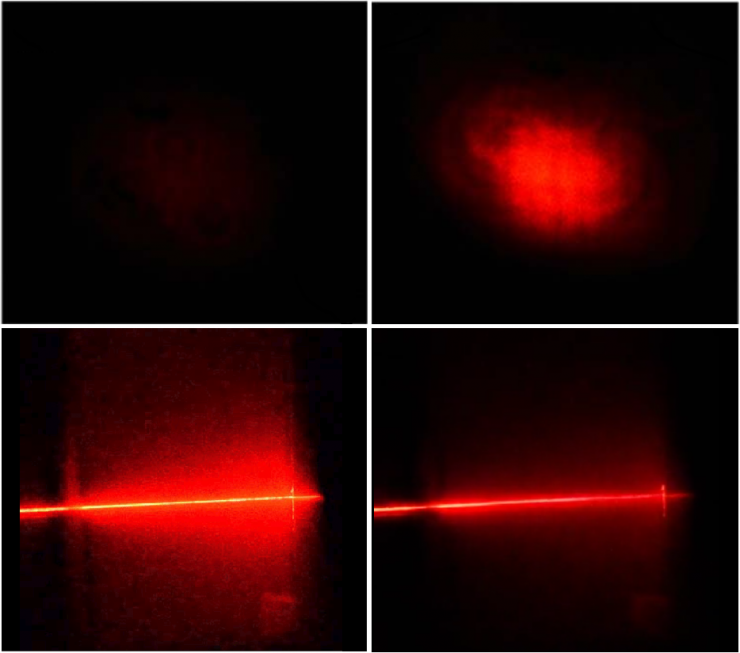
Cloud Clearing
Around 3200 BCE humans in Ancient Sumer invented writing, a way to efficiently store and transfer data from one person to another. Nearly 5000 years later, the International Data Corporation (IDC) estimates that by 2020 the size of the world’s digital data will be close to 40 Zettabytes. This would be the informational equivalent of all human speech ever spoken, if it was digitized as 16 kHz 16-bit audio. In order to access and transfer all this data, new technologies are necessary, to meet the increasing need for higher network bandwidths.
One of the most advanced methods of telecommunication is free space optical communication (FSO), the light-based transfer of data between two coordinates. For FSO atmospheric clearness is a key issue. Atmospheric perturbations like clouds and fog cause the scattering of light, which blocks the signal transmission, for instance in ground to satellite communication setups. The current approach to circumvent this issue is the multiplication of networked ground stations, guaranteeing clear skies for at least one ground station. This approach is complex and expensive. Actively clearing the clouds from the beam has been tried as far back as the 1970s and 1980s (mainly for increasing visibility on the battlefield). High-power CO2 lasers were used to vaporize and shatter water drops. However, the very high energy required is prohibitive for applications with fog extending over 100 m in thickness (lasers of typically 10 kW/cm2 continuous wave (cw) and 10–1000 MW/cm2 pulsed).
Our group pursues an alternative, active method to achieve FSO through clouds and fog, using ultrashort high-intensity laser filaments. Here the laser filaments opto-mechanically expel the droplets out of the beam and create a cleared channel for transmitting high-bit-rate telecom data at 1.55 μm. The opto-mechanical displacement is due to an acoustic shockwave, which is caused by the filament. The low energy required for the process allows considering applications to Earth–satellite FSO and secure ground-based optical communication, with eitehr classical or quantum protocols.
Further Reading
"Physics and applications of atmospheric nonlinear optics and filamentation"
J. Kasparian & J.-P. Wolf
Optics Express 16(466), 466-493 (2008)
doi: 10.1364/OE.16.000466
"Ultraintense light filaments transmitted through clouds"
F. Courvoisier, V. Boutou, J. Kasparian, E. Salmon, G. Méjean, J. Yu, and J.-P. Wolf
Appl. Phys. Lett. 83, 213 (2003)
doi: 10.1063/1.1592615
"High repetition rate ultrashort laser cuts a path through fog"
L. de la Cruz, E. Schubert, D. Mongin, S. Klingebiel, M. Schultze, T. Metzger, K. Michel, J. Kasparian, and J.-P. Wolf
Appl. Phys. Lett. 109, 251105 (2016)
doi: 10.1063/1.4972954
"Free space laser telecommunication through fog"
G. Schimmel, T. Produit, D. Mongin, J. Kasparian, and J.-P. Wolf
Optica Vol. 5, Issue 10, pp. 1338-1341 (2018)
doi: 10.1364/OPTICA.5.001338

Effect of the filament on light scattering inside a cloud. The figure shows the front view (top) and the side view (bottom) of a 633nm laser beam propagating through an artificial cloud. On the left, the case without a filament is shown. A large quantity of the laser light is lost due to scattering. On the right, the filament-assisted case is shown. The beam is “contained” inside the cleared channel, the losses caused by scattering are greatly reduced.
